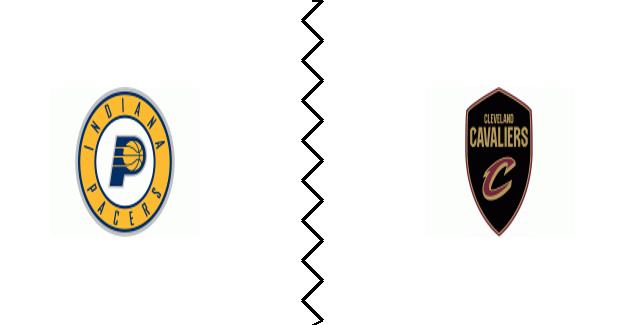2025-05-06 Indiana at Cleveland Matchup Preview

Cleveland's dominance on the offensive glass and defensive pressure figures to be a significant factor as they look to control their series against Indiana.


Season Overview
The Cleveland Cavaliers finished the regular season with an impressive 64-18 record, showcasing their dominance throughout the year while the Indiana Pacers concluded with a solid 50-32 record, solidifying their playoff appearance. Cleveland's offensive game flows through their ability to secure offensive rebounds, with an offensive rebounding percentage of 25.9, allowing them extra opportunities to score, while the Pacers rely on ball movement and team play, demonstrated by an assist percentage of 67.1.
Offensive Analysis
Indiana's offensive approach revolves around ball movement and creating open looks for their shooters, reflected in their assist percentage of 67.1, indicating a team-oriented offensive system. Indiana's assist to turnover ratio during the regular season was a solid 2.2. However, their offensive rebounding numbers are a concern, as their offensive rebounding percentage is just 21.3, which could limit second-chance opportunities. In the playoffs, Indiana has elevated their assist percentage to 68.7, further emphasizing their focus on ball movement while their offensive rebounding rate dipped further to 16.9. Cleveland's defense in the playoffs allows an opponent assist percentage of 60.8, which will make Indiana's ball movement a challenge. Cleveland needs to take advantage of their stifling team defensive performance. Cleveland's assist percentage comes in at 57.7 in the playoffs.
Defensive Analysis
Defensively, Indiana focuses on disrupting passing lanes and protecting the rim, evidenced by their steal percentage of 8.4 and block percentage of 10.2 during the regular season. Cleveland's defensive strategy prioritizes containing dribble penetration and forcing turnovers, as shown by their steal percentage of 8.1. Indiana held opponents to a 35.5% shooting percentage from beyond the arc during the regular season. During the playoffs, Cleveland's ability to force turnovers has been on full display, with an increased opponent turnover percentage of 16.1 and steal percentage of 10.3. Meanwhile, Indiana's playoff defensive rebounding percentage stands at 76.4.
Pace and Style
Both teams prefer a similar pace of play, with Cleveland and Indiana having a pace factor of 99.8 and 99.9 respectively during the regular season. Indiana's offensive style leans towards a motion offense, emphasizing player movement and ball circulation to find the best shot. Cleveland implements a more structured offensive system, utilizing set plays and exploiting mismatches. Defensively, Indiana employs a mix of man-to-man and zone principles, adapting their approach based on the opponent's strengths and weaknesses. Cleveland primarily relies on a pack-line defense, aiming to protect the paint and force opponents into contested outside shots.
Key Matchups
The battle in the paint will be crucial, as Cleveland's ability to secure offensive rebounds and control the boards could provide them with valuable second-chance points. In the playoffs, Cleveland holds an offensive rebounding percentage of 27.1. Indiana's interior defense, led by their shot blocking presence, will be tested in their effort to limit Cleveland's second opportunities. Indiana's playoff block percentage is 10.7. Cleveland's turnover percentage improves dramatically from the regular season to the playoffs dropping from 11.6% to 9%. Indiana's playoff defense forces turnovers at a rate of 11.2%.
Prediction
Cleveland's overall team strength, combined with their dominance on the boards and disruptive defense, gives them a slight edge in this matchup. Cleveland's ability to control the tempo and capitalize on second-chance opportunities will be key to their success. Indiana will need to execute their offense efficiently and limit turnovers to stay competitive. Despite Indiana's efforts, Cleveland's potent offense and stifling defense will likely prove too much to overcome.
Predicted Score: Indiana 105, Cleveland 118